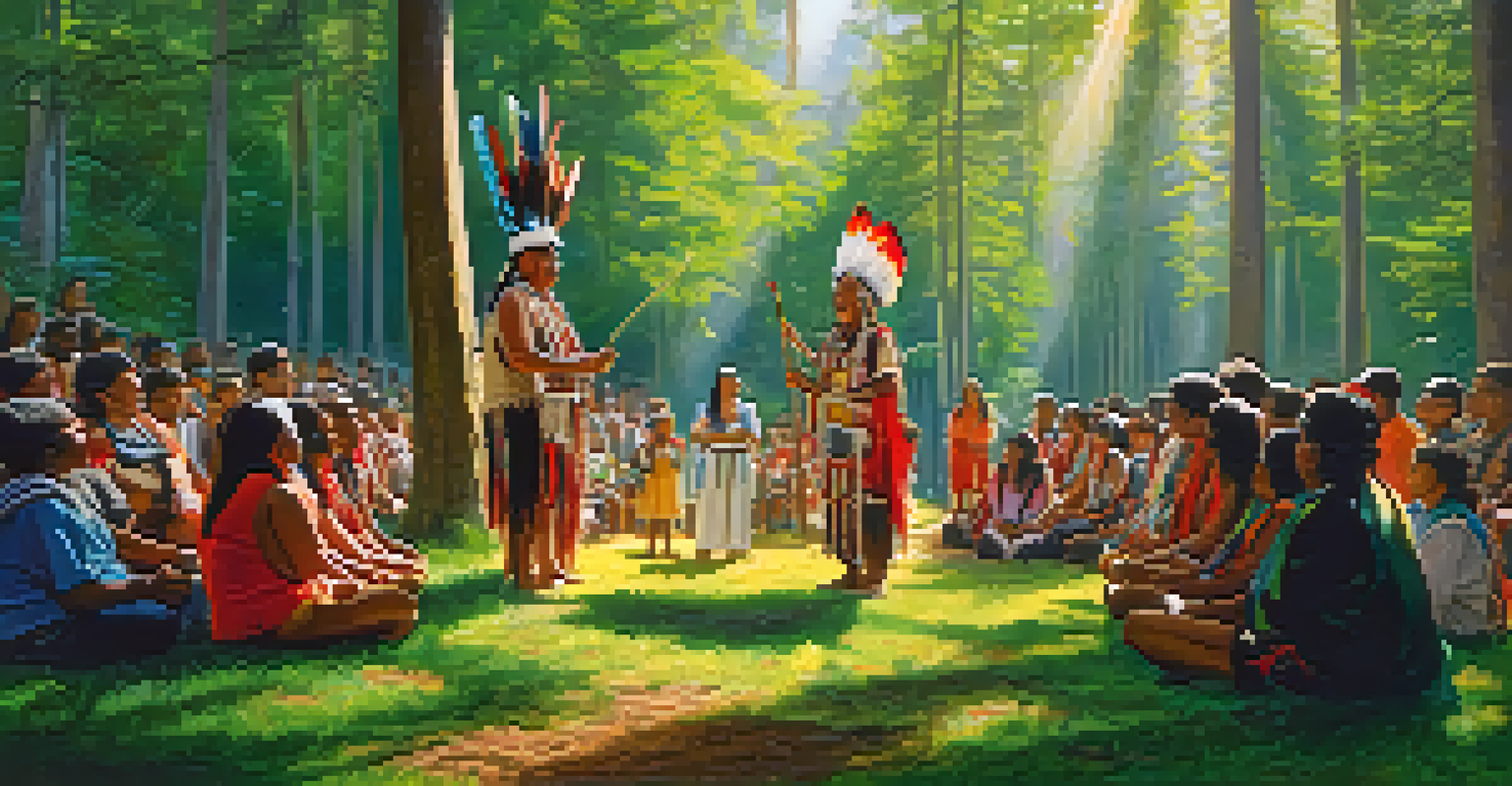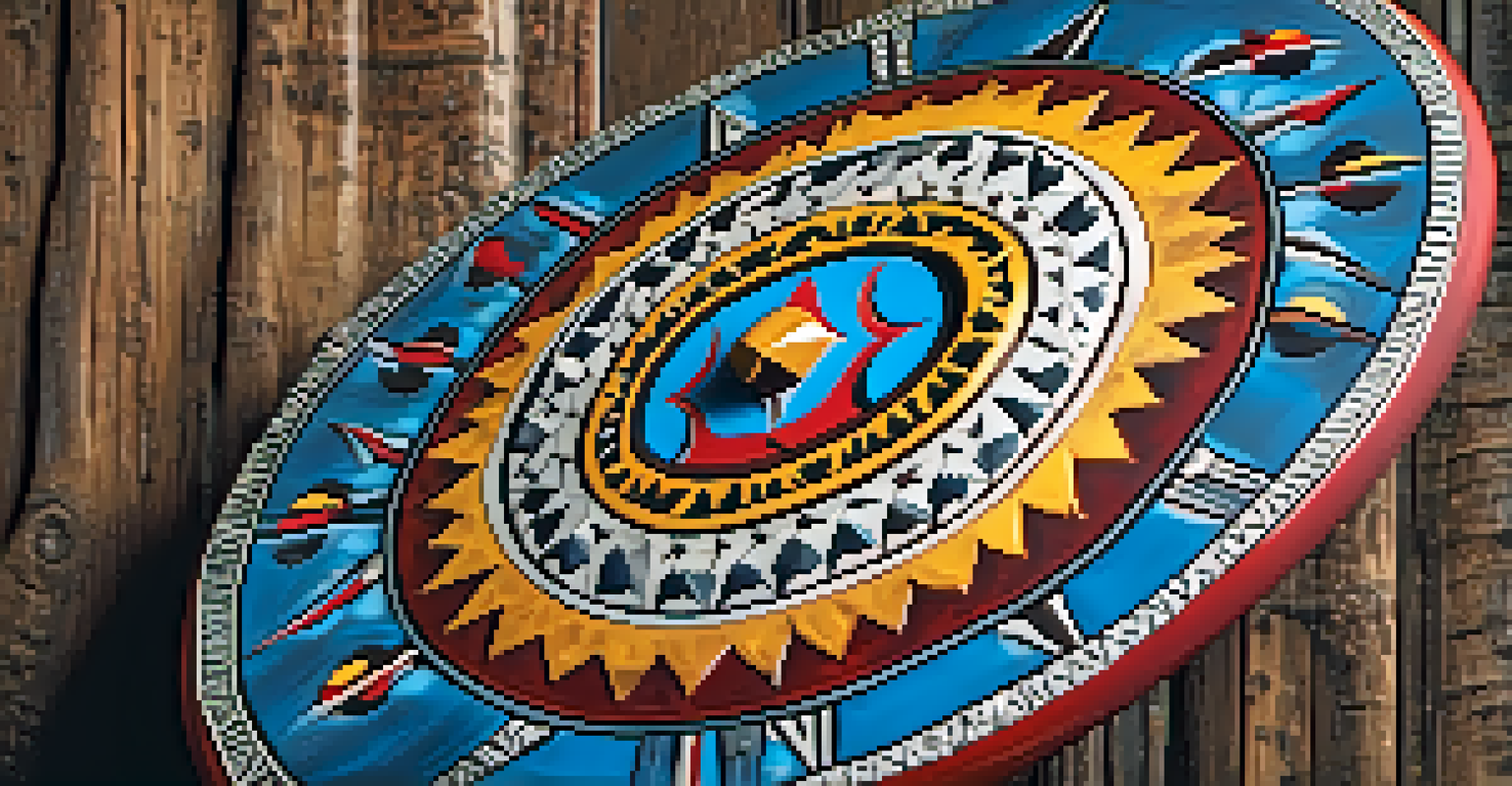Historical Context of Self Defense in Indigenous Cultures

Understanding Indigenous Perspectives on Self Defense
Indigenous cultures around the world have unique perspectives on self-defense that are deeply rooted in their histories. For these communities, self-defense isn't merely about physical confrontation; it's often intertwined with identity, spirituality, and community values. The ways they approach conflict and protection reveal much about their worldviews and social structures.
Indigenous peoples have the right to maintain and strengthen their distinct political, legal, economic, social, and cultural institutions, while retaining their rights to participate fully in the political, economic, social, and cultural life of the State.
In many Indigenous societies, the concept of self-defense extends beyond individual safety. It encompasses the protection of family, community, and sacred lands. This broader perspective emphasizes collective responsibility, where each member plays a role in safeguarding their heritage and way of life.
Understanding these perspectives is crucial, as they challenge mainstream ideas that often prioritize individualism. By viewing self-defense through an Indigenous lens, we can appreciate the rich tapestry of beliefs and practices that inform their approaches to conflict and safety.
Historical Examples of Self Defense in Indigenous Cultures
Throughout history, various Indigenous cultures have enacted self-defense in response to external threats, particularly during colonization. For instance, the Native American tribes often utilized guerrilla tactics to protect their lands against encroachment. Their strategies were not only about physical defense but also about preserving their way of life and cultural integrity.

Similarly, the Maori people of New Zealand employed traditional warfare techniques to defend their territories from colonizers. Their approach was deeply rooted in their ancestral customs, where each battle was not just a fight for land but a fight for the survival of their cultural identity.
Self-Defense as Community Responsibility
Indigenous perspectives on self-defense emphasize collective responsibility, intertwining identity, spirituality, and protection of heritage.
These historical examples reflect a resilience that is central to many Indigenous cultures. They illustrate how self-defense has been a vital response to survival, showcasing the strength and resourcefulness that have allowed these communities to navigate and resist external pressures.
Cultural Practices and Rituals Surrounding Self Defense
In many Indigenous cultures, self-defense is accompanied by a variety of cultural practices and rituals. These rituals often serve to reinforce community bonds and prepare individuals for potential conflict. For example, some tribes hold ceremonies that invoke ancestral spirits for protection during times of tension.
We must work together to protect the land and water, because that is our culture and our identity. It’s not just about our rights; it’s about the future of our children.
Moreover, storytelling plays a crucial role in these cultures, often recounting tales of heroes and ancestors who defended their people. These narratives not only foster a sense of pride but also impart valuable lessons about courage, strategy, and the importance of protecting one’s community.
Such practices highlight the multifaceted nature of self-defense in Indigenous cultures. They embody a blend of physical readiness and spiritual preparedness, illustrating that the act of defending oneself or one's community is deeply intertwined with cultural identity and heritage.
Legal Frameworks and Self Defense in Indigenous Communities
The legal frameworks surrounding self-defense in Indigenous communities vary significantly across different regions. In some areas, tribal laws provide specific guidelines on how members can defend themselves, often reflecting their traditional values. These laws prioritize community harmony and emphasize non-violent conflict resolution when possible.
However, in many instances, Indigenous self-defense practices clash with national legal systems, leading to complex legal battles. For example, when Indigenous people engage in self-defense against illegal encroachments, they may face legal repercussions that undermine their traditional rights to protect their lands.
Historical Resilience in Self-Defense
Historical examples showcase how Indigenous cultures have utilized self-defense not only for survival but also to preserve their cultural integrity.
Understanding these legal contexts is essential for recognizing the challenges Indigenous communities face in asserting their rights. It underscores the importance of respecting their self-defense practices within a framework that acknowledges their unique cultural and legal heritage.
Modern Implications of Traditional Self Defense Practices
Today, many Indigenous communities continue to draw upon traditional self-defense practices while adapting to modern challenges. This blending of old and new strategies reflects a dynamic approach to safety and protection. For instance, some tribes have incorporated contemporary legal tools to safeguard their rights while maintaining their cultural practices.
Additionally, the resurgence of cultural pride among Indigenous peoples has led to a renewed focus on traditional practices, including self-defense training. These initiatives not only empower individuals but also strengthen community ties, fostering a sense of collective identity and resilience.
The modern implications of these practices illuminate how Indigenous cultures are not static but rather evolve in response to contemporary realities. By embracing their history while navigating modernity, these communities continue to assert their rights and protect their heritage.
The Role of Education in Indigenous Self Defense
Education plays a vital role in preserving Indigenous self-defense practices and ensuring that future generations understand their heritage. Many communities are actively working to incorporate traditional knowledge into educational curricula. This effort not only informs youth about their rights but also instills a sense of pride in their cultural identity.
Moreover, workshops and training sessions that focus on traditional self-defense techniques are becoming increasingly common. These programs not only teach practical skills but also emphasize the philosophical underpinnings of self-defense within Indigenous cultures, fostering a deeper appreciation for their historical context.
Education Empowers Indigenous Heritage
Education plays a crucial role in preserving Indigenous self-defense practices by integrating traditional knowledge into curricula and community training.
By prioritizing education, Indigenous communities are empowering their members to navigate both traditional and modern challenges. This approach ensures that the values associated with self-defense are not lost but rather celebrated and adapted for future generations.
Intersection of Self Defense and Indigenous Activism
The intersection of self-defense and Indigenous activism is a powerful force in contemporary society. Many Indigenous activists draw upon traditional self-defense principles as they advocate for rights and recognition. This approach not only highlights the importance of safeguarding their communities but also challenges systemic injustices.
For instance, movements like Idle No More exemplify how self-defense can extend to environmental protection and social justice. Activists emphasize that defending the land is intrinsically linked to defending their culture and identity, showcasing the interconnectedness of their struggles.

This blend of activism and self-defense underscores a broader narrative about Indigenous resilience. By standing firm in their rights and heritage, these communities continue to inspire others while fostering a greater understanding of the challenges they face.